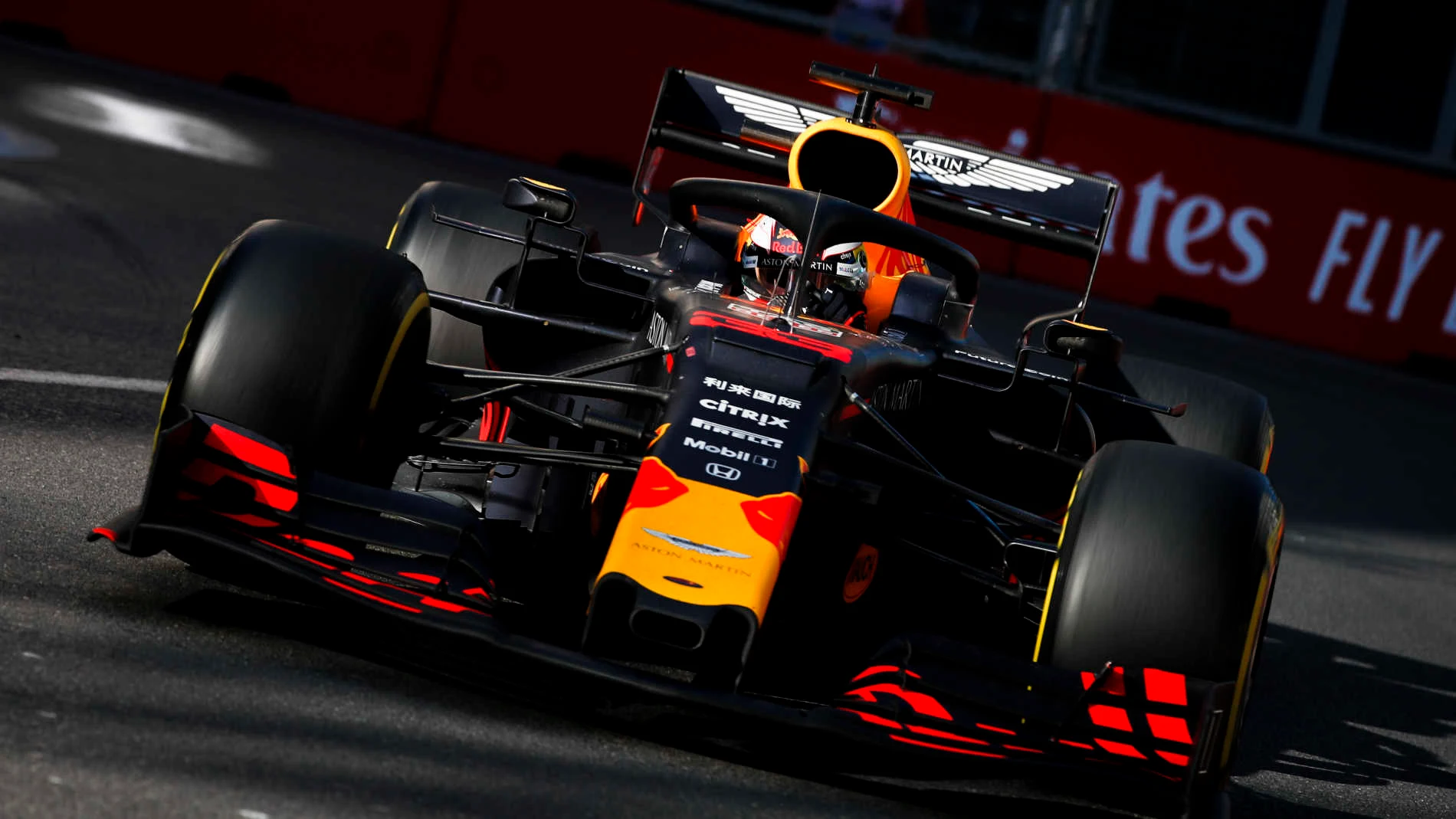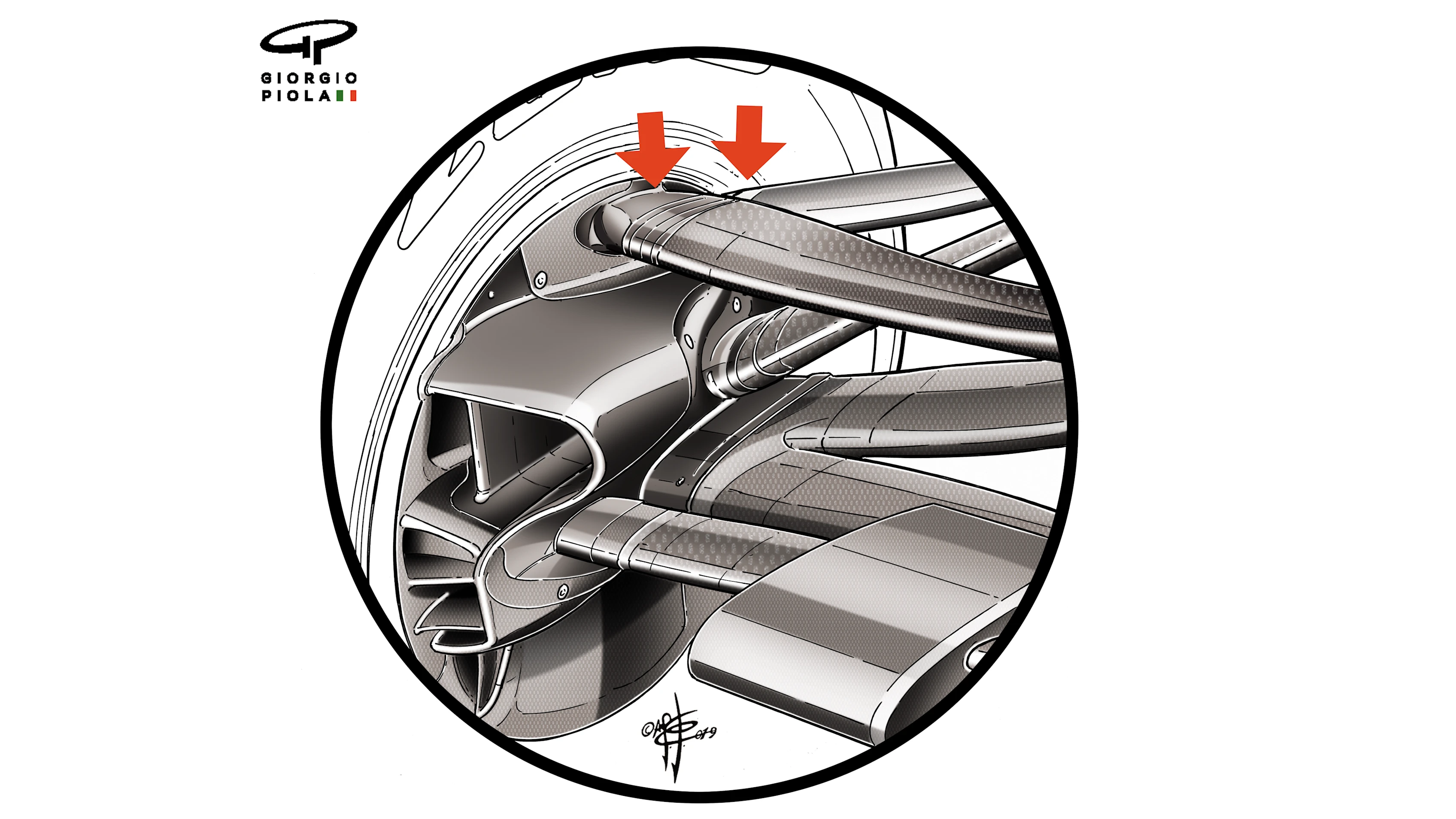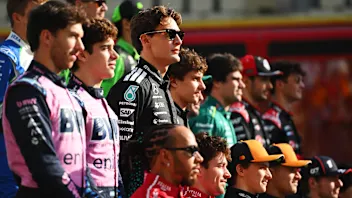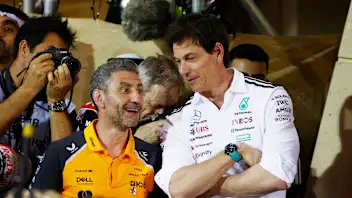TECH TUESDAY: The trick suspension that could help transform Red Bull’s season

.webp)
Red Bull will arrive at this weekend’s Spanish Grand Prix with what Christian Horner has described as evolutionary developments rather than revolutionary ones. Developments around the strakes to the under-nose from China onwards brought the car a useful gain in lap time that was carried forward into the Baku weekend.
Just as in 2017, Red Bull began the season with an aerodynamic imbalance; very fast into slow corners (as confirmed by the speed data from our trackside pieces in Melbourne and Bahrain), but wayward accelerating out of them – and losing time to Mercedes and Ferrari through the fast corners.
READ MORE: 'Subtle' Red Bull updates planned for Spain
Because the number of under-nose strakes has been limited to two per side this season, it’s been more difficult for aerodynamicists to guide the flow to the required parts of the bodywork with the necessary fidelity at all parts of the car’s aerodynamic map. So it can be, for example, that the division of flow between barge boards and underfloor works fine at one rake angle (when the car is being braked heavily, say) but not at another (when the car is no longer being braked or when it is accelerating). This would be consistent with the traits of the RB15 in the first two races.

The greater the static rake angle favoured by a team (effectively the angle of the car's floor relative to the ground), the greater such a problem would be magnified – and Red Bull infamously favour a very high static rake angle within a short wheelbase car. This format of car would be the least tolerant of any difficulty keeping that under-nose flow consistent between barge board and underbody.
Compared to a longer wheelbase car with a greater distance between front axle and cockpit, there is less distance for the airflow’s direction to be changed and furthermore, the high-rake floor will be inducing powerful negative pressure which could be influencing that under-nose flow very differently at low speeds than at high.
READ MORE: Analysing the top three teams’ 2019 car designs
Red Bull believe that in the last two races they have largely got on top of that basic difficulty and so can now begin developing the car’s basic concept rather than attending to an unanticipated problem.
A key innovative feature of the RB15 is its unique front suspension design, which uses separate mounting points to the wheel hub for the two legs of the upper wishbone.
There are several potential advantages of such a layout over the conventional single mounting point for both legs. Because the rear leg can now move in line with the steering arm, there is no longer a need to have a cut-out in that leg to allow adequate steering lock. This will make the leg stronger for a given weight – or lighter for the same weight.

But it is perhaps the subtle suspension geometry changes it allows that have been of most interest to the design team. It allows a greater proportion of the tread’s width to be in contact with the ground (i.e. the contact patch is bigger) at high steering angles than is the case with a conventional layout. High steering angles are used only on low speed corners and this is a very useful tool in reducing the slow speed understeer that is an inherent trait of an F1 car.
The way the aerodynamics and weight distribution are, an F1 car will tend to understeer at slow speeds when running with the aero balance required to give the essential rear stability at high speeds. Anything which can reduce that slow speed understeer when set up around the stability limit at the track’s highest speed corners will be a boon.
So if the early-season imbalance has been cured, as Red Bull believe, then the inherent platform upon which the car will be developed should only be enhanced by this clever suspension arrangement.
Next Up

.webp)
.webp)


